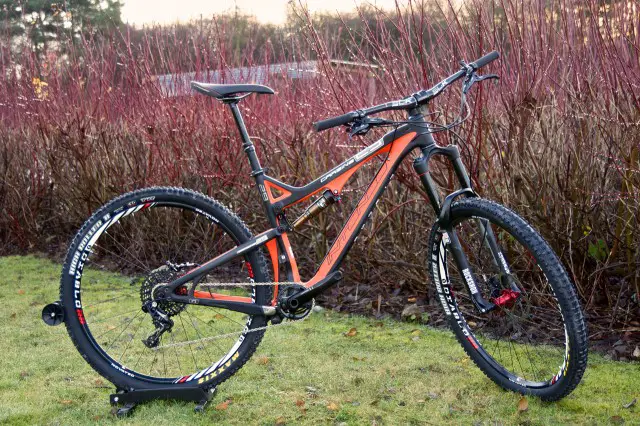It’s fair to say that Garmin is probably the best known maker of GPS units.
The recent bar-mounted units we’ve tested have been very impressive on many levels: accuracy, reliability and battery life, so the release of a video camera was both surprising and yet obvious.
The Virb is a sizeable beast (110mm x 50mm x 35mm) and weighs in at 210g with its quick release mount. Without the mount it’s about the size of an eTrex, but that does give it some advantages. For a start, there’s room for a 2000mAh battery, similar to that on a compact camera; there’s a low-energy screen and a big, positive filming button.
Being a Garmin, the unit also works as a GPS that, at the basic level, allows you to log your ride, even with the camera on standby. The unit can be used to tell you speed, distance and all that, while letting you upload your route to Garmin Connect (or Strava) when you get home. There’s also a Wi-Fi mode that allows all the parameters (film quality, wide angle, orientation) to be changed by a smartphone, while also allowing you to check the live picture through the camera on your phone.
There are several mounting options for the Virb. All of them involve clicking it into a large, but secure, cradle with a mounting hole in its base. Several mounts can then bolt to this, including one for a vented helmet, stick-on mounts, handlebar mounts and an interesting-looking chest harness that mounts the camera on your shoulder, Predator-style. Due to its form, a GoPro-style chest mount won’t ever happen.
Powering up the Virb is easy and you’re presented with a low-energy screen that will show you a live picture as well as regular GPS stuff like position, speed and so on. Filming is done by the huge and positive switch that’s impossible to get wrong, even with winter gloves. This will also power up the camera (and start filming) even if it’s powered completely off. But why power down? The big battery lasted for hours on all-day rides, recording the GPS trail all day and being called into movie action at the flick of the switch. This is a great feature and anyone who’s had a GoPro run low on batteries will appreciate it.
Film quality is very good, provided the mount is kept as secure as possible. Head mount seemed the way to go for stable shots, though the system weight on top of your head was noticeable on longer rides. There’s the option to have your trail position, speed and other details overlaid on screen too. Garmin makes a free, basic editing programme that was a breeze to use: editing shots together, picking a soundtrack, slowing bits down and uploading to YouTube is simple, even for newcomers. One feature that I see being important to camera-commuters is that your exact position and speed can be seen while you’re filming yourself fending off angry white van drivers.
The shoulder mount is less of a success as it won’t work if you’re wearing a pack and you look a little silly with it on. There’s no goggle strap-mount either and the camera (like a GoPro) will only work right way up and upside-down, but not sideways (like a Contour with rotating lens) limiting its mounting options. The (replaceable) convex lens is going to attract scratches quickly if you’re careless.
Overall: With a heavy overall weight and limited sensible mounting options, the Virb has got a big mountain to climb to rival GoPro and others. The excellent battery life, positive switch and GPS features alone will be enough to swing some votes though.
Review Info
| Brand: | Garmin |
| Product: | Virb Camera |
| From: | Fisher Outdoor, fisheroutdoor.co.uk |
| Price: | £269.99 |
| Tested: | by Chipps for Four months. |

